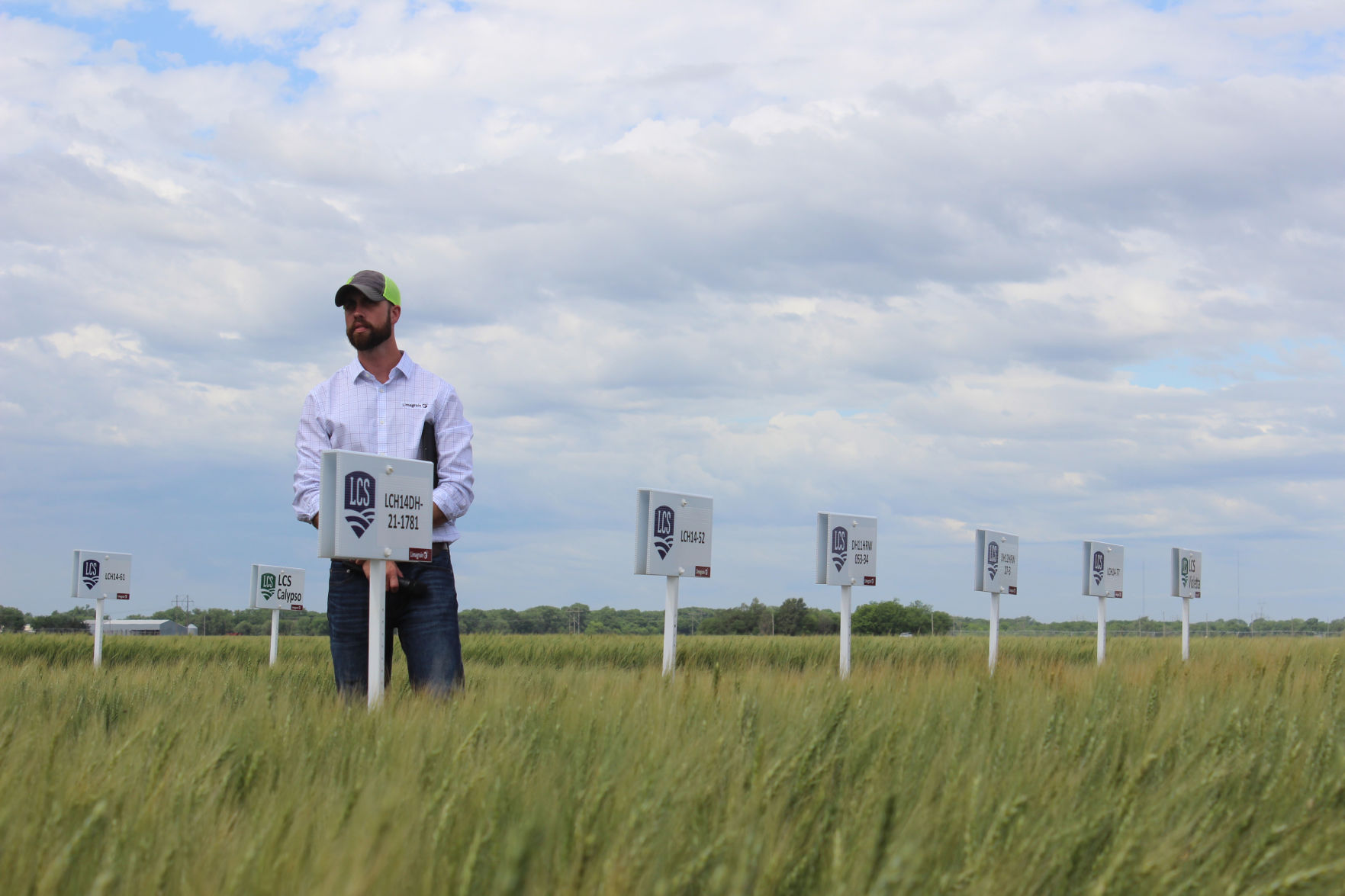New grassy-weed-control weapon for wheat will be available on a limited basis this fall

Tom Clayman has yet to harvest the latest in wheat seed technology growing in his company’s fields near Yoder, Kansas.
However, the Kauffman Seeds owner is already fielding calls from farmers wanting a new herbicide-tolerant wheat variety that will help them manage grassy weeds.
“We have quite a list of people who want to try it,” he said of LimaGrain Cereal Seeds’ new LCS Fusion AX, adding there was even one grower in the Pacific Northwest who wanted to buy up all of Kauffman’s production.
That won’t happen, said Clayman, one of a select group of dealers in the state growing the variety this year and offering certified seed for farmers this fall. He planned to roll a combine through the Fusion variety the week of June 11.
The latest weed-control weapon for wheat was among the highlights at LimaGrain’s field day near Wichita in May.
“We are really excited about this,” said Drew Hendricker, LimaGrain’s regional sales manager. “If you are a seed associate of mine, I would encourage you to look hard at this.”
The concept for a new wheat variety with a herbicide-resistant trait was spurred by Colorado wheat growers several years ago. They wanted a better alternative to battle grassy weeds in their fields.
They approached Colorado State University with their request.
The result is a wheat production system called CoAXium, created by a partnership between LimaGrain, chemical company Albaugh and Colorado Wheat Research Foundation.
Fusion is one of two varieties so far with the non-GMO axigen trait, which will be marked by an AX in each variety name that includes the trait. The other, Incline AX, is marketed by the Colorado Wheat Research Foundation through its PlainsGold brand.
“What we are bringing on is a different mode of action to control winter annual grasses,” said Chad Shelton, global proprietary products director at Albaugh.
The new wheat technology enables farmers to spray the Aggressor herbicide over growing wheat, killing grassy weeds like feral rye or downy brome, Hendricker said. It also gives farmers a new mode of action besides BASF’s Clearfield varieties, which have been on the market for nearly 20 years.
“This is the first variety we started in the LimaGrain program that shows resistance to Aggressor herbicide,” he said, later adding, “The important things to remember, we are releasing two-gene resistance right out of the gate.”
Stewardship important
The new technology is modeled after Clearfield, which pairs WestBred wheat genetics with BASF’s Beyond herbicide to control grasses and broadleaf weeds.
Hendricker said some of the farmers he has spoken to are looking for another solution to grass weed control besides Clearfield.
“It’s been a struggle,” he said of Clearfield. “Sometimes it works, sometimes it doesn’t. It’s expensive. So this is very much of interest to wheat farmers.”
But farmers also must be vigilant so that Fusion and other varieties with the axigen trait last more than one generation, Shelton said.
“If we steward this technology right, we will be able to use it a long time,” he said.
A few things to keep in mind:
• The use of certified seed is required.
• If you are in an annual cropping system, don’t go back-to-back with CoAXium wheat
• In a wheat-fallow system, use CoAXium wheat two of four years.
• Growers must sign a yearly grower agreement like with Clearfield varieties.
• Other things are similar to Clearfield contracts, including random audits and a hotline to report violations.
• Use only the label rates for Aggressor herbicide.
• Aggressor herbicides in the future will include broadleaf weed control solutions.
• Don’t save seed.
“The most critical thing, probably No. 1, is stewardship,” Shelton said.
“Stewardship is going to be critical because 18 or 19 years from now, if we steer this technology, we will still be able to use it.”
Making improvements
Improved wheat varieties with the axigen trait will be launched in the future, said Marla Barnett, LimaGrain’s senior wheat breeder.
“It is a tool line,” she said of Fusion.
The medium to medium-late maturing wheat has OK straw strength and not great disease resistance, she said.
“But in a year where I haven’t seen stripe rust or leaf rust anywhere, it looks great,” Barnett said. “It has really looked phenomenal this year.”
Clayman is seeing good potential in his fields, too. He planted it on marginal ground this year and estimated a harvest yield of 65 bushels an acre.
Clayman is still making a list of those interested in seed this fall. He expects all his production to be sold after harvest. For instance, one grower from south-central Kansas wants to plant it in most of his wheat acres.
“He picked up some new ground and he needs to get it cleaned up, and cleaned up fast,” Clayman said.
Amy Bickel can be reached at 620-860-9433 or [email protected].


